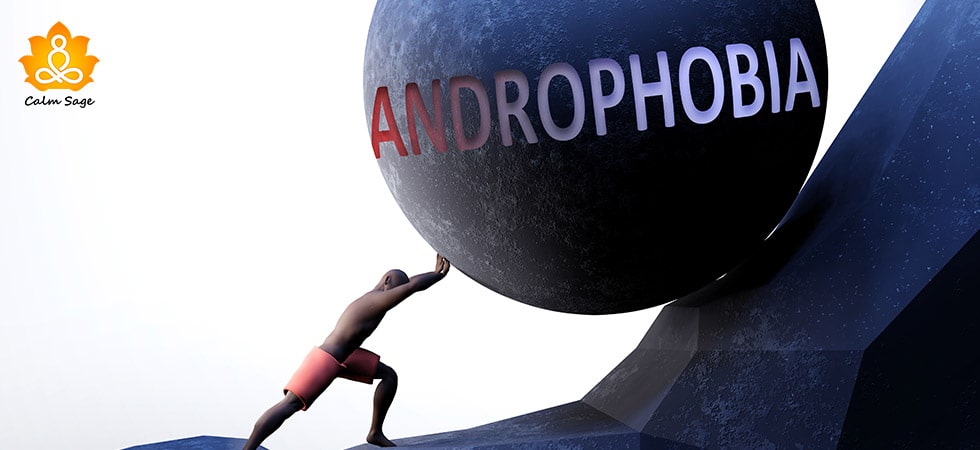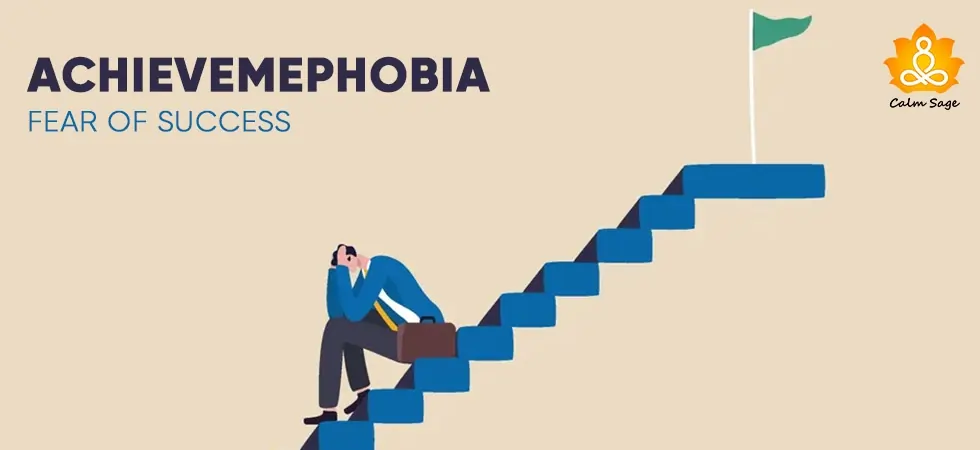Mini-Guide: What Is Androphobia (Fear Of Men)?

Androphobia (an-dro-pho-bia) is a specific type of phobia characterized by fear of men. Andros is a Greek word for man and phobia means fear. In this specific type of phobia, people may experience extreme fear or anxiety of men.
The symptoms of this phobia are so extreme that thinking, hearing, or seeing a man-like personality may trigger excessively. Androphobia came into the picture frequently when the “MeToo Movement” began. The opposite of androphobia is gynophobia (fear of women).
In this blog, we will be understanding androphobia, its symptoms, causes, diagnosis, treatment, and more. So, let’s get started!
What is Androphobia?
Androphobia is a fear of men wherein a person struggling with androphobia experiences extreme fear or anxiety after seeing, hearing, or thinking of men. Androphobia is a specific type of phobia known for decades however; it came into the picture frequently when the “MeToo Movement” began.
MeToo Movement is a way to show support to survivors of rape, assault, harassment, and others. This phobia is commonly diagnosed in women as compared to men.
Some people associate androphobia with misandry, however, they are two different terms with different meanings, androphobia is the fear of men meanwhile, and misandry means hatred of men. The opposite of misandry is misogyny which means hatred of women.
Research shows that around 12% of the US population develops a specific phobia disorder at some point. The prevalence of androphobia is still unknown; I was not able to find exact research or study related to it. Androphobia manifests differently in different personalities, androphobia may show as:
- Women are able to trust men at home such as brothers, relatives, father, or spouse but are not able to trust other men resulting in a persistent and excessive fear of men.
- Women or men unable to see, hear, or think about men-like personalities resulting in panic or anxiety-related symptoms.
- Men or women unable to think about being close to men
- Men or women trying to avoid social and other situations wherein men are present
A child, men, or women fearing men may try to avoid situations involving men. Androphobia in children may outgrow as they grow and gain positive experiences. However, androphobia in adults might become a severe mental health issue, as they are not able to gain control of their physical responses.
Other Phobias Related to Androphobia
- Aphenphosmphobia: Fear of being touched
- Automatonophobia: Fear of human-like figures
- Ephebiphobia: Fear of teenagers
- Gynophobia: Fear of women
- Haphephobia: Fear of touch
Symptoms of Androphobia
Below listed are some of the common symptoms of androphobia:
- Chronic anxiety
- Dizziness
- Dry mouth
- Excessive sweating
- Headache
- Increased heart rate
- Muscle ache or tension
- Nausea
- Unable to speak
- Upset stomach or stomach pain
- Shortness of breath
- Terror
- Trembling or excessive sweating
Risk Factors of Androphobia
Females are likely to develop androphobia. Additionally, having a family member or close relative linked to anxiety disorder or phobia may increase the risk of developing specific phobias such as androphobia.
Research also shows that spending more time with people struggling with androphobia or other types of specific phobia may lead to the development of phobias, anxiety disorders, or other mental health issues. Below listed are some of the other risk factors related to the development of androphobia:
- Genetics or heredity
- Presence of another phobia
- Presence of anxiety disorders or other mental health issues
- Presence of panic disorders
- Alcohol or substance abuse
Causes of Androphobia
The exact cause of androphobia is still unknown; however, research shows that the development of androphobia could be the presence of multiple factors such as:
- Traumatic history: Traumatic history experienced in adulthood or childhood leading to permanent fear of men. In such situations, androphobia may also convert to post-traumatic stress disorder (PTSD).
- Child abuse or Domestic Violence: Cases of child abuse and domestic violence are highly prevalent in females as compared to men; therefore, child abuse, domestic violence, or others may lead to the development of androphobia.
- Bully: Childhood or adulthood bullying might also result in the development of fear of men.
- Rape, sexual assault, harassment, or others: Rape, sexual assault, and others may lead to the development of androphobia.
- Sensitization: Learned fear response caused by exaggerated responses to the situation might cause androphobia in children and adults.
Diagnosis and Treatment of Androphobia
If you think you or your loved one might be struggling with the symptoms of androphobia, the first step is to connect with a mental health professional for proper diagnosis and treatment planning. To connect with an experienced and certified mental health professional through online platforms, click below:

Great for a large network of licensed therapists
-
$60 to $90/week, billed every 4 weeks
-
Therapy via messaging, phone, or live video chat
-
Flexible cancellation at any time
20% off your first month

Great for CBT Based therapists
-
$40/week, billed every 4 weeks
-
Therapy via messaging, phone, or live video chat
-
Specialization for CBT based Therapy
20% off your first month

Best for Treatment Plants
-
$60 to $90/week, billed every 4 weeks
-
Therapy via messaging, phone, or live video chat
-
Flexible cancellation at any time
$100 off your first month with code SPACE
Coming forth to the diagnostic process, please know that there’s no exact diagnosis process for diagnosing androphobia. Diagnosis of specific phobias is generally made through the Diagnostic and Statistical Manual of Mental Disorders 5th Edition Updated Version (DSM-5-TR). The diagnostic process of androphobia or other type of phobias includes:
- Symptoms must be present for more than 6 months and they must be interfering with the overall quality of life
- Symptoms must trigger extreme anxiety right after thinking, seeing, listening, or encountering a man
- Symptoms must lead to significant stress or panic
- Symptoms must be in proportion to the actual danger
- The presence of symptoms must make individuals avoid situations associated with the presence of men
The treatment process of androphobia involves therapy and medications prescribed by a mental health professional such as:
- Cognitive behavioral therapy (CBT): CBT helps in replacing negative thoughts with positive ones. Additionally, CBT also teaches effective coping skills for addressing negative thoughts.
- Exposure therapy: Exposure therapy is one of the common and effective treatment options for specific phobias such as androphobia. Exposure therapy involves gradual exposure to the source of fear in a safe environment. This therapy helps in reducing symptoms related to phobias.
- Medications: Medications are generally prescribed to reduce symptoms such as anxiety, panicking, stomach pain, and others. Generally, anti-anxiety medications are prescribed.
Self-Help Strategies for Overcoming or Managing Androphobia
If you or your loved one is struggling with mild symptoms of androphobia, here’s how you can help overcome androphobia:
- Start maintaining a journal regularly to track symptoms, emotions, and behaviors related to the phobia or mental issues
- Seek support from loved ones, family members, or friends to work on your symptoms
- Try gradual exposure therapy techniques in a safe environment
- Focus on eating right and sleeping well
I hope this blog helps you understand what is androphobia (fear of men). For more such content, connect with us through all social media platforms.
Thanks for reading!




















